We departed Vilamayor del Rio before dawn, aiming to reach Villafranca Montes de Oca. The streets were deserted and the light made stark contrasts, giving the buildings an unearthly cast.
It was slow going, mostly uphill until we were able to take a break for breakfast at Belorado.
Belorado is an historic town built in the valley of the river Tirón. The C14th church of Santa Maria appears to be supporting three giant dragon nests – I remarked to that effect to Sharon – but we heard later they were stork nests. It seems they are inclined to build nests on any high point, whether steeple or lamp pole.
The church has a wonderful altarpiece depicting St James as the slayer of Moors (Santiago Matamoros) as well as in the form of a pilgrim.
The town is on the border between Navarre and Castile. It has an ancient history back to the Celts, although its current layout is medieval. It was once a stronghold of El Cid. The town houses a museum of radio – with a great range of old radio receivers dating way back to the early years of radio.
The remains of a castle overlooks the town, straddling the border of Castile – it apparently has Roman origins. In the town square below, known as El Corro, was granted the first ever licence to operate a market – a privilege provided by Alfonso I in 1116. Amazing history!
Then it was on to Tosantos through a nice forest trail. And on the right, high in the hills, we could see caves that appeared to have been occupied. One set of caves has been built onto: the Ermitage de la Peña (Hermitage of Sorrow).
On past tiny Villambistia then coffee at Espinosa del Camino
This prepared us for the steep climb and descent to Villafranca Montes de Oca. As we descended we passed what appeared to be the ruins of the Monasterio de San Felix de Oca – which dates from the C9th.
There is a nearby plaque with an inscription in Spanish:
La Cividad de Burgos en the 1100th Aniversario of Conde Diego R. Porcelos SV Fundador Quien Según la Tradición aquí Reposa I-III-MCLXXXIV
Which translates roughly (google translate) as:
The Municipality of Burgos in the 1100th Anniversary of Count Diego R. Porcelos the Founder who, according to tradition, rests here I-III-MCLXXXIV/ 1-3-1984
The Count, who governed from 873-885, was the second count of Castile, succeeding his father Rodrigo. From 882-4 King Alfonso III of Asturias placed him in charge of the repopulation of the Burgos area, and engaged in successful military campaigns against an arab army trying to annex the land along the River Arlanzón. He also seems to be instrumental in restoring the episcopal See of Oca.
The path departs from the road and over a footbridge as you see the town. Those who stuck to the road described it as dangerous, blind and crossing a narrow road bridge. We took the picturesque route over a creek.
We managed to get a room at the Pension El Pajero (the Donkey). It was across from the bar run by the sister of the Pension’s owner. Both the bar and the Pension had intriguing insect sculptures on the wall. Dinner was excellent and the room comfortable.
________________________________________
INDEX – If you wish to follow our journey from the beginning, or jump in to any of the Camino posts,
here is a link to the index page – which can also be found in the navigation bar at the top of this blog
________________________________________

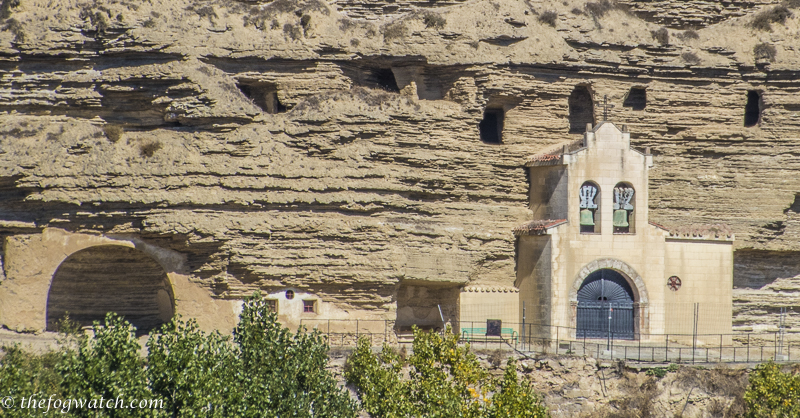



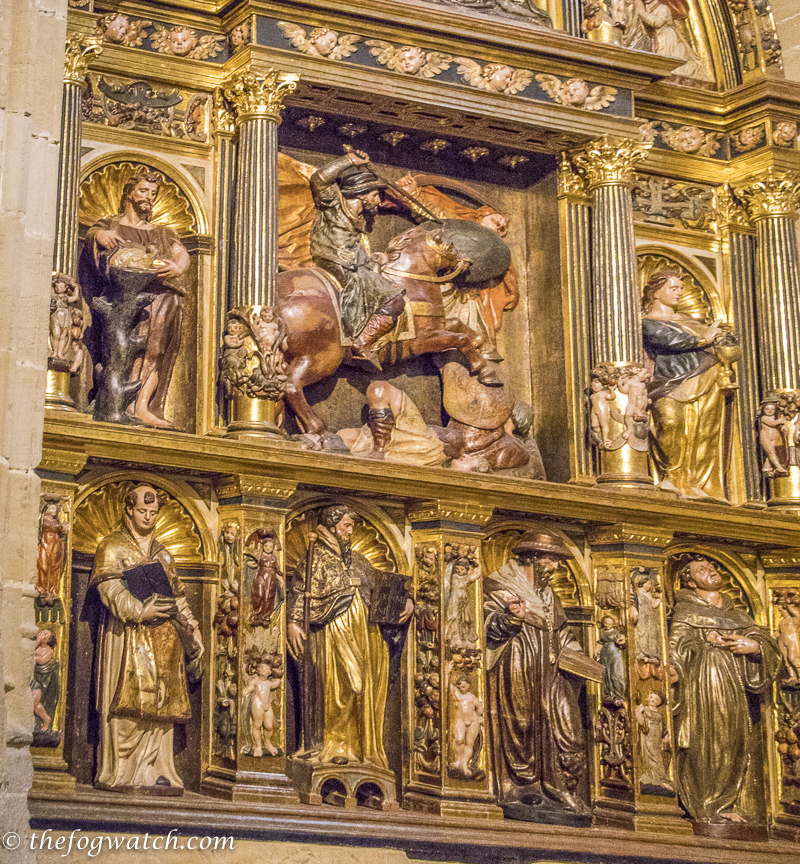
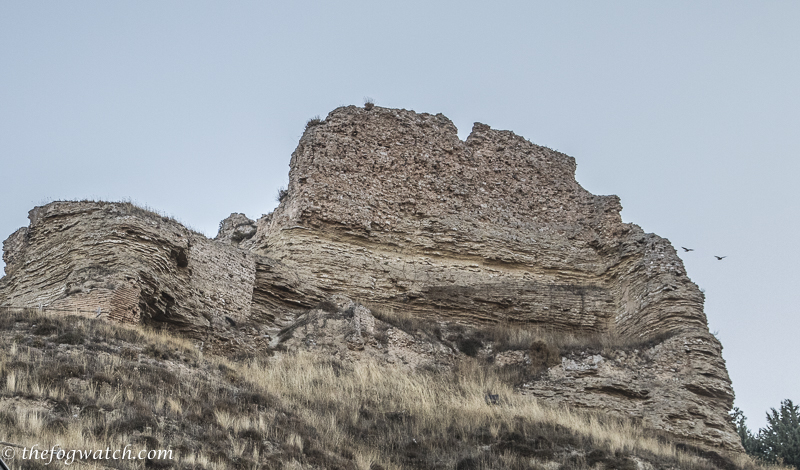
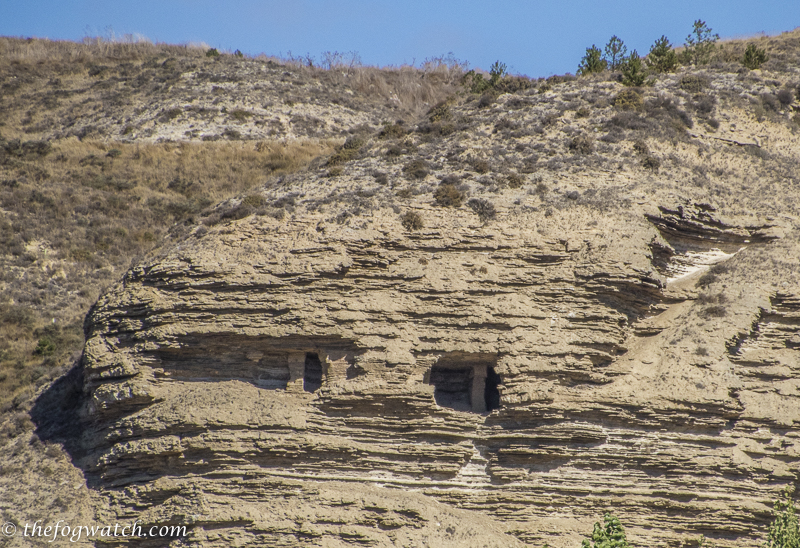
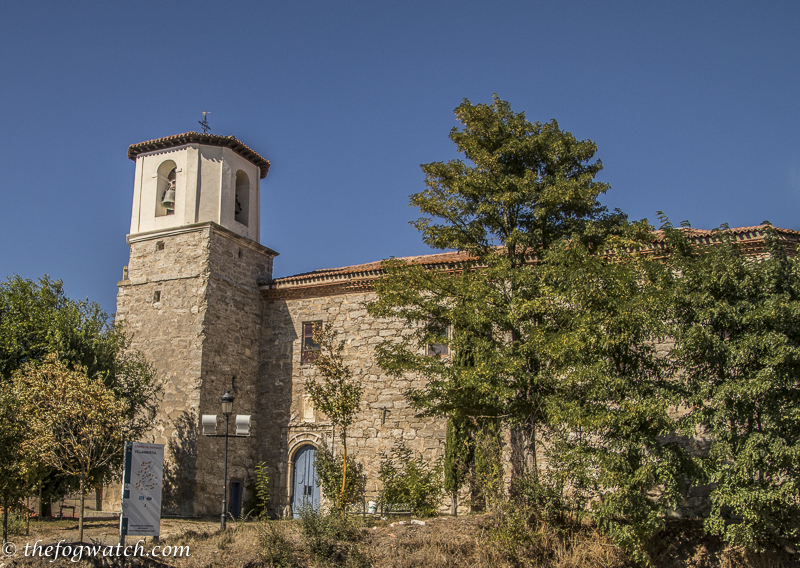



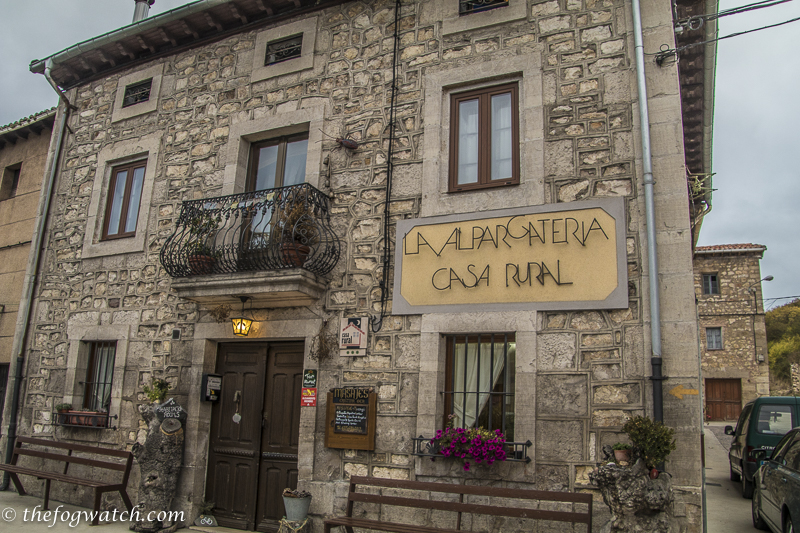
Hi Jerry, wonderful read and photos. The altarpiece is beautiful. I remember seeing the caves, couldn’t get a good photo of them so glad to see them here. Thank you for another walk down memory lane. Looking forward to your next post.
Thanks Kathy – yes they were unusual and a wonderful sight 🙂
The image of the hauntingly lit streets of villamyor del rio is wonderful. One of the best you have taken.
Many thanks Tim 🙂